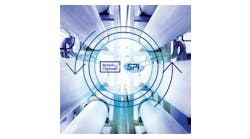Water treatment dealers have always played a role in “thought leadership.” They have been advisers and experts and have provided solutions regarding a number of water and water treatment related issues. However, due to the growing number of droughts affecting the U.S. and other parts of North America as well as efforts by struggling water utilities and public officials to deal with water shortages, their role as what we often refer to as “thought leaders” is likely to expand considerably in years to come.
This is especially true when it comes to water demand management. The goal of a water demand management strategy is to reduce water consumption for the long term. However, what distinguishes a water demand management program from other water conservation or water efficiency efforts is usually in how this is accomplished — often by adjusting the price we pay for water.
One key part of a water demand management system is what government entities and water utility organizations often call “cost-reflective pricing.” As most water treatment dealers know, the cost of water in the U.S. and in many other areas of the world does not reflect the true costs for utility companies to treat the water, store it and deliver it. Typically, these added costs are absorbed by taxpayers. With cost-reflective pricing, each individual water user pays for water based more closely on the true cost of how much he or she actually uses.
However, water demand management strategies are often considered “hot potatoes” because of their political implications.* Politicians simply do not want to consider implementing them. For example, in the state of New Mexico, water users were offered tax rebates to remove lawns and landscape vegetation. While the program met with some success, the state did not believe it went far enough in reducing water consumption or meeting the growing water challenges the state was facing. After great hesitation, state officials thought they had no choice but to accept a likely uproar from citizens and possible political repercussions and raise water rates somewhat significantly, especially in key population hubs such as Albuquerque.**
While many of the state’s residents understood why the rate increases were necessary, it is safe to say few in the state were happy about the higher costs and a significant segment of the population thought they were unnecessary. This is the challenge other communities may face if they employ water demand management strategies. Because of this, the big question public officials must grapple with and water treatment thought leaders must understand is whether a water demand strategy is the best option to reduce water consumption.
Does it work?
Because it is such a difficult strategy to embrace, studies in recent years have examined the pros and cons of a water demand management program. One study, completed in 2007 by the Pioneer Institute, a nonpartisan public policy think tank based in Massachusetts, came to the conclusion that these strategies do work and encouraged public officials to take a market based or cost reflective approach when it comes to pricing water.
The analysis found that, on average, a 10 percent increase in the price of water can be expected to diminish water demand in the urban residential sector by about three to four percent. It also found that a non-price approach — for instance, encouraging customers to conserve water by installing low-flow restroom and bathroom fixtures — produces less significant results than expected. The researchers concluded this was likely because some users of low-flow toilets, for example, flushed twice and users of low-flow showerheads took longer showers, eliminating or minimizing the potential benefits of these products.
They also found that a price-based approach is easier to enforce and overall much more cost effective than a non-price approach. With a non-price strategy, utility companies are often put into a role of policing water regulations and administering tax rebates when residents and commercial facilities install water-reducing fixtures. Further, when non-price strategies are implemented and are successful — meaning residents and businesses have installed low-flow and no-flow restroom fixtures and do reduce water consumption — total revenues decrease, making it harder for utility companies to meet some of their operating expenses.
Other options
While this and other studies indicate that a water demand/cost-reflective program can reduce water consumption, they also indicate that, along with being politically difficult, such a program can produce unexpected burdens on some water users more than others. For instance, a high income family will likely be less affected by increases in water rates even if it uses more water than a low income family of the same size. Additionally, some industries such as car washes, laundries and manufacturers that require the use of large volumes of water may be more negatively affected by higher water rates than others (even if they are allowed special pricing), especially if they cannot pass on these charges to their customers.
In addition, the Pioneer Institute study pointed out that when the cost of water is increased, it encourages water users — both consumers and businesses — to find their own ways to reduce water consumption instead of taking steps based simply on tax rebates or regulations.
An example of this we have found in the restroom fixture manufacturing industry is what occurs when a commercial facility conducts a water audit to see exactly where water is being used or misused in a facility and where use can be curtailed. It is often after such an audit that facility managers begin fixing leaks and replacing older toilets and urinals, for instance, with newer technologies that meet or exceed current federal government water reduction regulations or, in the case of urinals, use no water at all.***
While they did not solve all water-related problems in New Mexico, tax rebates as well as regulations for consumers to transfer to water-reducing technologies did meet with some success. Some drought impacted states have also realized significant water use reductions by implementing non-price strategies. For instance, one of the key reasons Phoenix and other parts of Arizona have reduced water consumption so significantly in the past decade is the requirement that in some cities all government facilities must install waterless urinal systems. The Pioneer Institute study acknowledged that the results of such non-price water saving strategies can vary widely, producing “zero to very significant results.”
Because of the increasing need to reduce water use one way or another, water-reducing programs that incorporate both price and non-price strategies will likely become more common in years to come in many parts of the country. And, we are likely to see that a combination approach, when implemented fairly and equitably, can result in significant water savings.
Footnotes:
* "Raising water prices can be politically very difficult,” according to the Pioneer Institute study. “As a result, using non-price techniques has been the overwhelming technique used in the U.S.” However, as we have seen in the state of New Mexico, some political officials are reconsidering this approach.
** The city of Albuquerque draws its water from underground aquifers recharged by the nearby Rio Grande. In 1993, it was found that the water table had dropped about 160 feet since 1960 and that water levels are dropping about two feet per year. This is key to the city’s water concerns.
*** It is estimated that each no-water urinal system can save as much as 40,000 gallons of water per year.
A frequent speaker and author on water conservation issues, Klaus Reichardt is founder and CEO of Waterless Co. Inc., Vista, Calif., maker of waterless urinals and other restroom products. He founded the company in 1991 with the goal to establish a new market segment in the plumbing fixture industry with water conservation in mind. He may be reached at [email protected].


